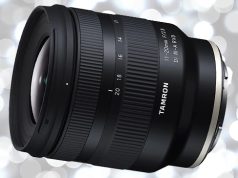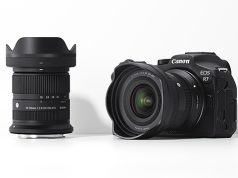Over the last few years, sticker shock and technical glitches kept digital frame sales from soaring. All that changed this year with improved performance and lower prices.
“The increase in orders and interest has more than doubled since last year,” states Michael Hope, Marketing Director, Digital Spectrum Solutions, Inc. “I think it’s because the category has been widely accepted within the brick-and-mortar retail chains and markets.
“They’re really a hot item right now. It’s a combination of a decrease in price points and better picture quality,” reiterates Stefan Guelpen, Co-CEO, Smartparts, Inc.
Seasonal or Sensational?
Who’s buying digital frames, why and when? Guelpen believes the frames are a highly seasonal gift item. “We think more than half of the picture frames sold (this year) were gifted to someone. Mother’s Day and Christmas were the two big seasons.”
Alan Kessler of MediaStreet agrees they sell better on holidays like Mother’s and Father’s Day, Christmas and Chanukah. “But they have been doing well all season,” he notes. “I think it started out as a gift item and is becoming more popular as an everyday item. Instead of people putting photo albums on their coffee tables, they’re putting digital frames on them, or hanging them on a wall.”
“What was primarily a gift item last Christmas is quickly becoming a must-have product,” adds Richard Kizner, Business Development Manager, Fidelity Electronics. “Consumers are also finding they have space for more than one frame in their homes. We’ve barely moved past the early adopter stage, and yet this year there will be new features, a greater variety of sizes and styles, and even better image quality.”
Help Selling Prints?
One industry insider joke about digital frames states they’re a lot like roach motels. Lots of prints go in, but none come out. “There’s some truth to that,” laughs Smartparts’ Guelpen. “Consumers save their photos on computers, which is not a good medium to share pictures. What the picture frame will do is allow (consumers)to show all their pictures— that’s when they find those special photos they want to print.”
Digital Spectrum’s Hope also believes digital frames help sell prints. “It’s sort of like the music industry,” he explains. “You might complain about the number of people listening to music on the Internet, but it certainly makes people more aware of what’s available. So if you’re looking at more photos getting out of the PC, into a frame and in front of family and friends, it’s an easy step to say ‘Oh, I like that picture, and either print it on a home printer or send it to a local retailer.”
On the other hand, Sungale’s Josh Adachi doesn’t think digital frames will affect print sales one way or the other; at least, not yet. “Consumers will continue to buy both digital photo frames and prints for at least 10 years,” he predicts. “It is possible that as ‘Generation D’ (the digital generation) gains purchasing power, digital photo frames may reduce the demand for prints. However, it’s arguable whether or not this demographic would have bought prints in the first place. For the time being, digital photo frames and prints are still two separate categories that serve different needs.”
MediaStreet’s Kessler agrees that to a certain extent, the frames may help sell prints, but as a general rule, it’s not going to help the print market per se. Instead, he concludes, it’s another avenue for consumers to express themselves through photographs.
Current and Future Trends
Sungale’s Adachi predicts that digital photo frames will continue to grow as a staple of home furnishing. “The digital photo frame marries tradition and technology in a way that is very attractive to consumers.” Adachi also sees the category splitting in two different directions. “Both smaller screens (3.5” and below) and larger screens (15” and above) are expected to see an increased popularity while the demand for mid-level options (5” – 10”) levels out. We forecast a growing demand for cost-minded, stripped down models as the category becomes a commodity. On the other end, the tech-savvy crowd will continue to seek bigger displays and WiFi compatibility.”
Fidelity Electronic’s Kizner sees frames with more portability (battery-powered frames—probably solar or dynamo powered, as well); more integration (digital frames will be incorporated into a wide variety of consumer and promotional products); more connectivity (to the Internet/ Wifi/Bluetooth); and more variety (from postage stamp to sofa size frames and everything in between).
“The category is just going to get stronger and we’re going to have more and more varieties,” states Kessler, “whether it’s different styles, bigger sizes, or improved technology. However,” he notes, “the biggest reason (for increased sales) is price. Two years ago a 7-inch frame was $300. Now they are $100 and under; they’re more affordable now.”
For a complete list of digital frame manufacturers, go to page 37





